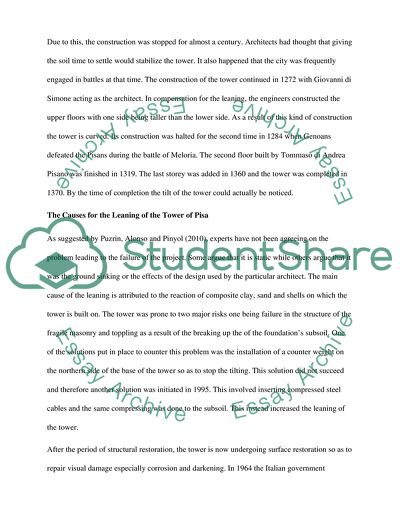Cite this document
(“Tower of Pisa Essay Example | Topics and Well Written Essays - 1500 words”, n.d.)
Retrieved from https://studentshare.org/history/1575372-case-study-on-an-historical-civil-engineering-failure
Retrieved from https://studentshare.org/history/1575372-case-study-on-an-historical-civil-engineering-failure
(Tower of Pisa Essay Example | Topics and Well Written Essays - 1500 Words)
https://studentshare.org/history/1575372-case-study-on-an-historical-civil-engineering-failure.
https://studentshare.org/history/1575372-case-study-on-an-historical-civil-engineering-failure.
“Tower of Pisa Essay Example | Topics and Well Written Essays - 1500 Words”, n.d. https://studentshare.org/history/1575372-case-study-on-an-historical-civil-engineering-failure.


